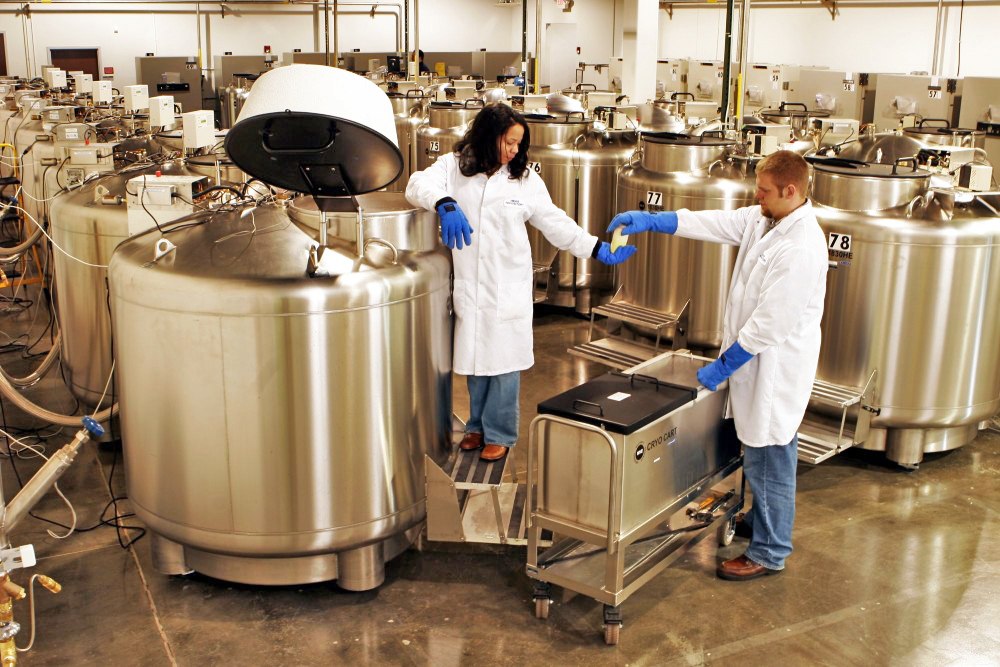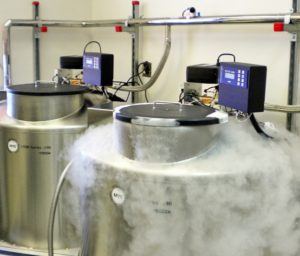What is a -150C Nitrogen Freezer and Who uses them?
- By : PureAire Monitoring Systems
- Posted on : September 12, 2017
- News Room
A -150 C freezer, also known as a nitrogen freezer, is used in cryo preservation. While you might think of Ted Williams being frozen on ice for a future in which he can be brought back to life, the cryo preservation method can be used to keep any type of cell alive in a suspended state. Learn how nitrogen freezers are used and how PureAire can keep your facility safe.
Who Uses Nitrogen Freezers?
Nitrogen freezers use liquid nitrogen to freeze biological material in extremely cold temperatures. While they are known as -150 C freezers, they actually run closer to -200 C. When living cells are stored at such low temperatures, they go to sleep rather than die. Decades or even centuries later, the frozen cells can be safely thawed with no loss of life or degradation of DNA due to their long storage.
Compared with other methods of cryo preserving materials, a liquid nitrogen freezer offers the most stable freezing environment using ultra-low temperatures. An electric freezer is incapable of maintaining temperatures below -135 C.
Environmental researchers are interested in cryo preservation to preserve the last stock of endangered species. Rather than lose, say, the critically endangered black rhino species, the rhino’s cells can be cryogenically frozen for the future. Coral reefs are also considered desirable candidates for cryo preservation due to their high rates of die-off from ocean acidity.
Animal breeders are interested in cryo preservation to keep a desired bloodline alive, and fertility specialists see the potential for helping women delay childbirth through cryogenic preservation of fertilized embryos or eggs.
The cryo preservation industry is not without its challenges. To ensure the viability of the frozen material, the cells must be slowly brought to the -150 C temperature and thawed in the same manner. If the temperature drops too quickly per minute, the cell membrane could rupture, causing cell death.
Any time liquid nitrogen is used, there is a risk of oxygen displacement should the nitrogen storage tank leak or spill. Nitrogen gas has no color or odor, so employees would not notice that a leak had occurred.
As nitrogen leaks into the atmosphere, it displaces oxygen. Levels can fall so low that the ambient air will not have enough oxygen for safe respiration. In an oxygen deficient environment, workers can experience respiratory distress, cognitive deficiencies, and death via asphyxiation simply by taking a few breaths in an oxygen deficient environment.
Any facility that relies on nitrogen freezers to preserve biological material must take safeguards to detect and mitigate nitrogen leaks. One simple, effective solution is an oxygen monitor, such as that offered by PureAire.
An oxygen monitor measures the levels of oxygen in the room. As long as there is enough oxygen, the monitor remains silent yet alert. If a spill occurs and levels fall close to the OSHA threshold, the alarm flashes a light and sounds an alarm to notify all personnel there is a leak. Employees can then leave the room before they are harmed by the oxygen deficient air.
PureAire’s oxygen monitor features a robust zirconium sensor, which can take accurate reading without maintenance for 10 or more years. The monitor provides steady readings when barometric pressure changes or thunderstorms occur. The O2 monitor functions accurately in temperature extremes, and is suitable for use in cryogenic facilities and freezers.
If you’re interested in a reliable oxygen monitor that’s accurate, cost-effective, and fuss-free, you may want to partner with PureAire.




